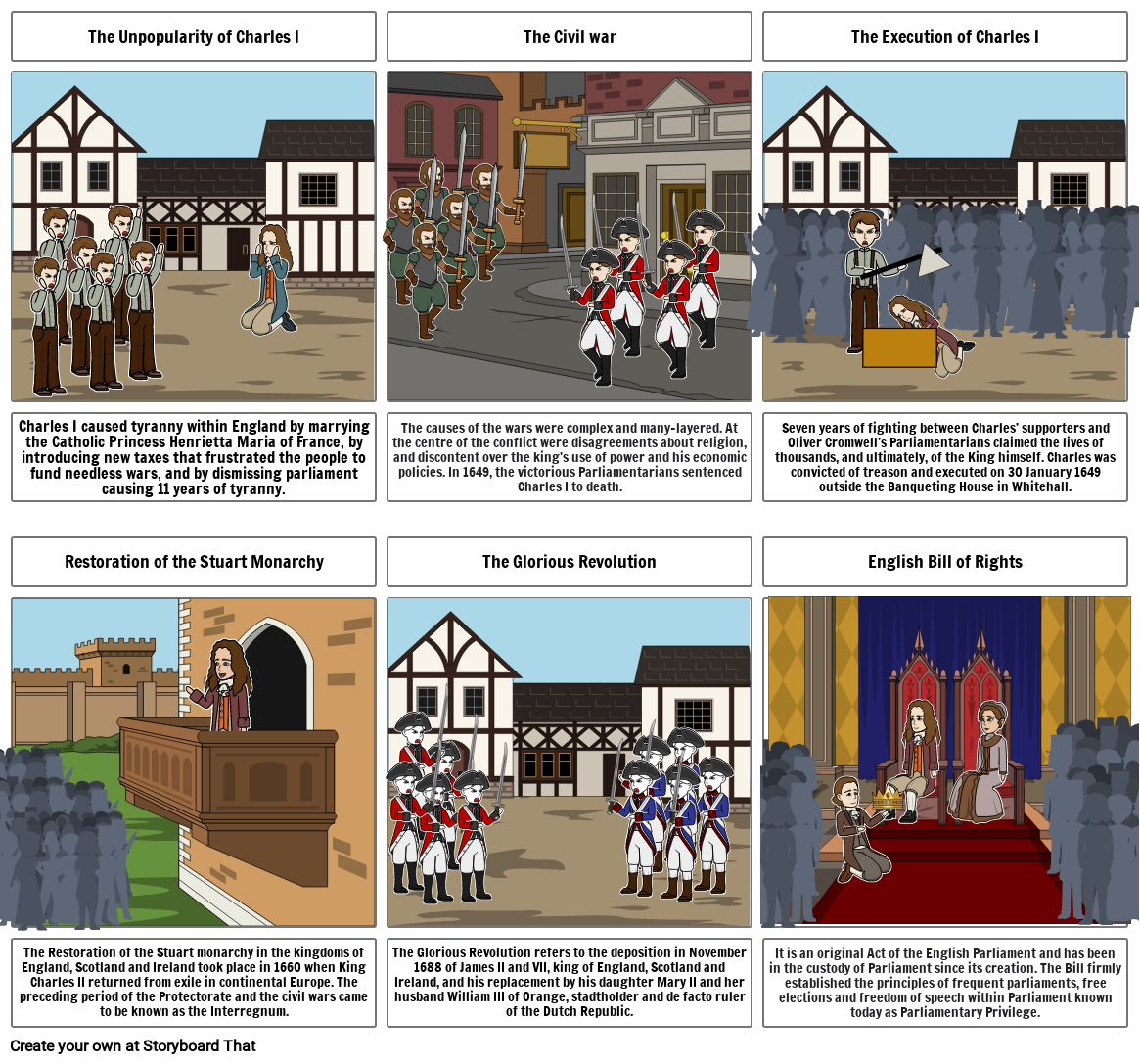English Civil War Cartoon

Storyboard Text
- The Unpopularity of Charles l
- The Civil war
- The Execution of Charles l
- Charles I caused tyranny within England by marrying the Catholic Princess Henrietta Maria of France, by introducing new taxes that frustrated the people to fund needless wars, and by dismissing parliament causing 11 years of tyranny.
- Restoration of the Stuart Monarchy
- The causes of the wars were complex and many-layered. At the centre of the conflict were disagreements about religion, and discontent over the king's use of power and his economic policies. In 1649, the victorious Parliamentarians sentenced Charles I to death.
- The Glorious Revolution
- Seven years of fighting between Charles’ supporters and Oliver Cromwell’s Parliamentarians claimed the lives of thousands, and ultimately, of the King himself. Charles was convicted of treason and executed on 30 January 1649 outside the Banqueting House in Whitehall.
- English Bill of Rights
- The Restoration of the Stuart monarchy in the kingdoms of England, Scotland and Ireland took place in 1660 when King Charles II returned from exile in continental Europe. The preceding period of the Protectorate and the civil wars came to be known as the Interregnum.
- The Glorious Revolution refers to the deposition in November 1688 of James II and VII, king of England, Scotland and Ireland, and his replacement by his daughter Mary II and her husband William III of Orange, stadtholder and de facto ruler of the Dutch Republic.
- It is an original Act of the English Parliament and has been in the custody of Parliament since its creation. The Bill firmly established the principles of frequent parliaments, free elections and freedom of speech within Parliament known today as Parliamentary Privilege.
Over 30 Million Storyboards Created
No Downloads, No Credit Card, and No Login Needed to Try!


